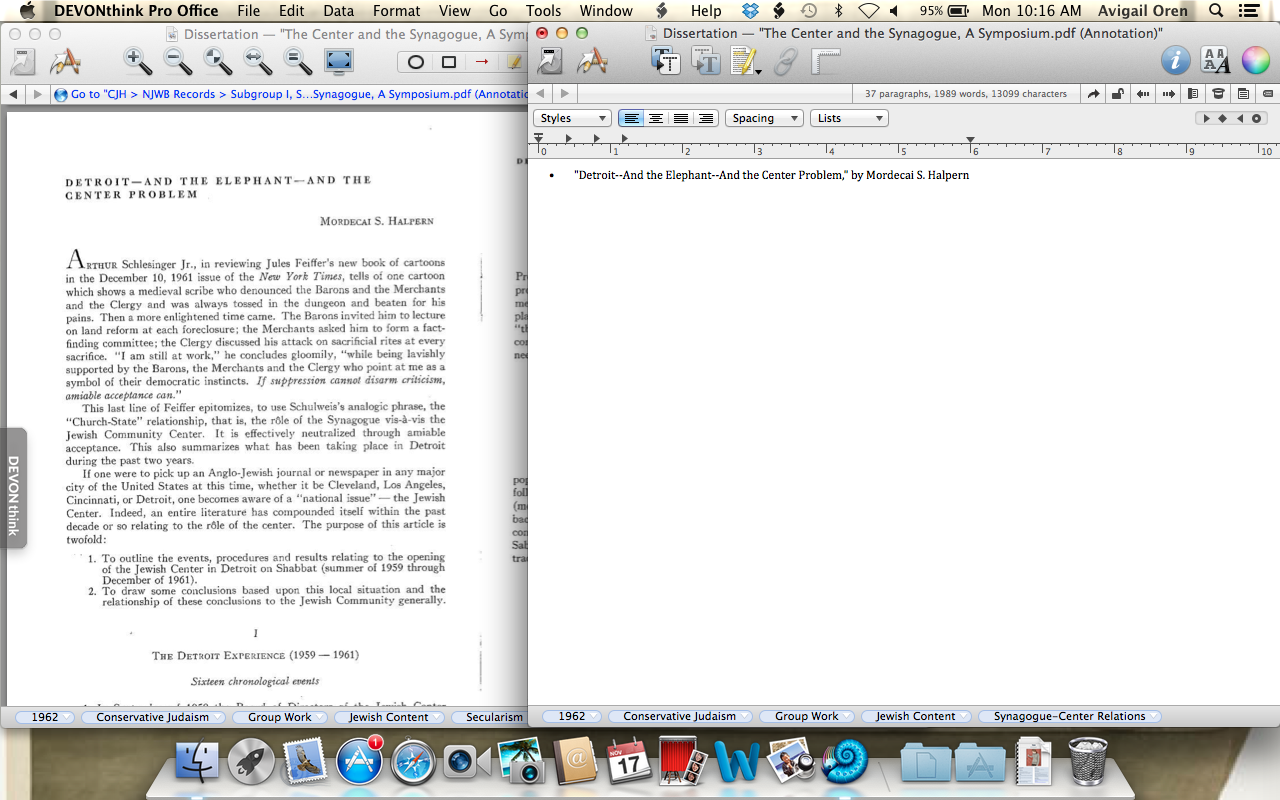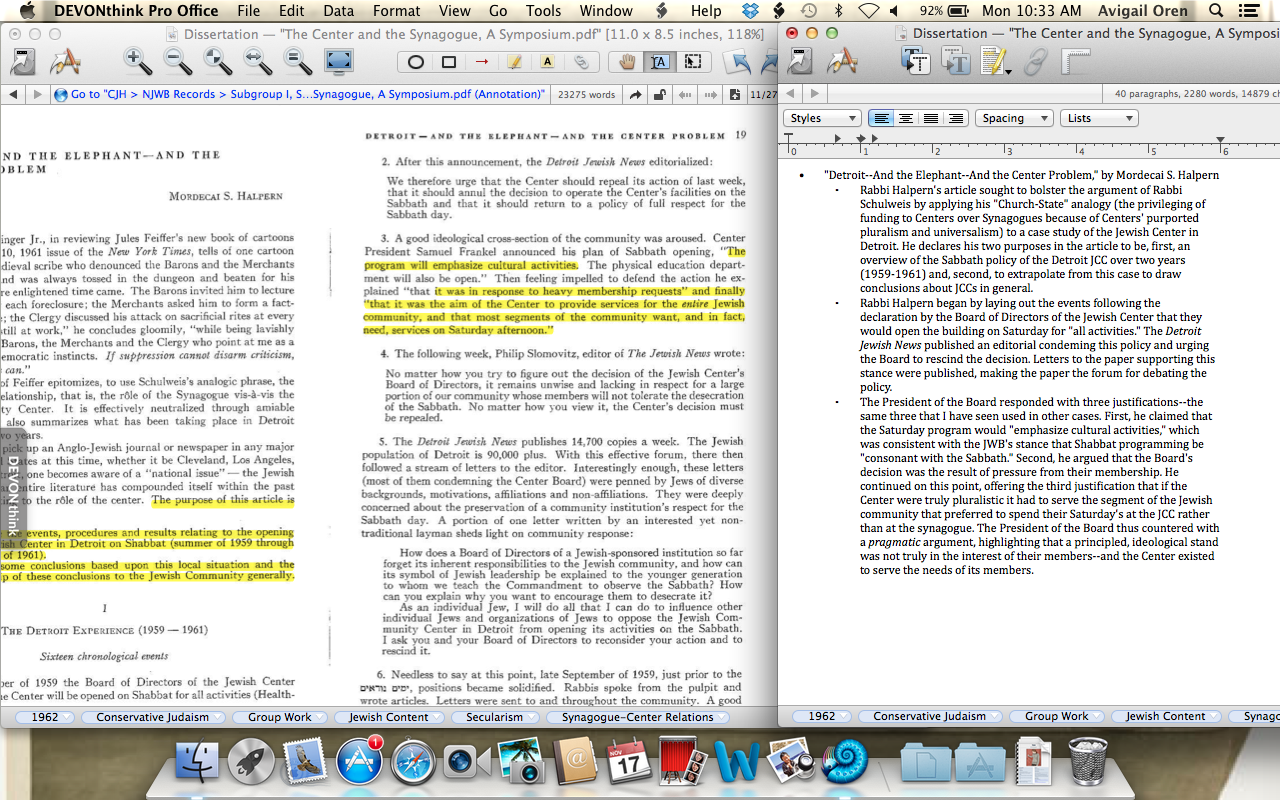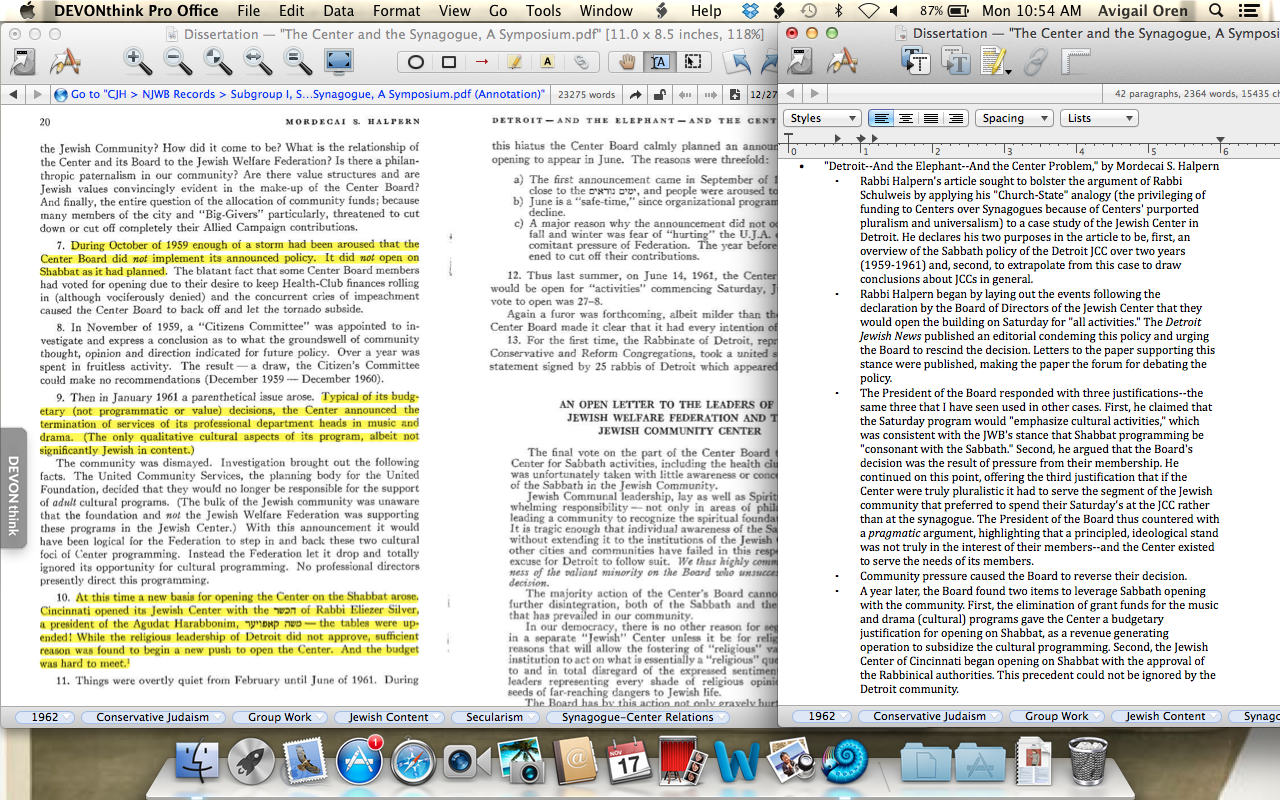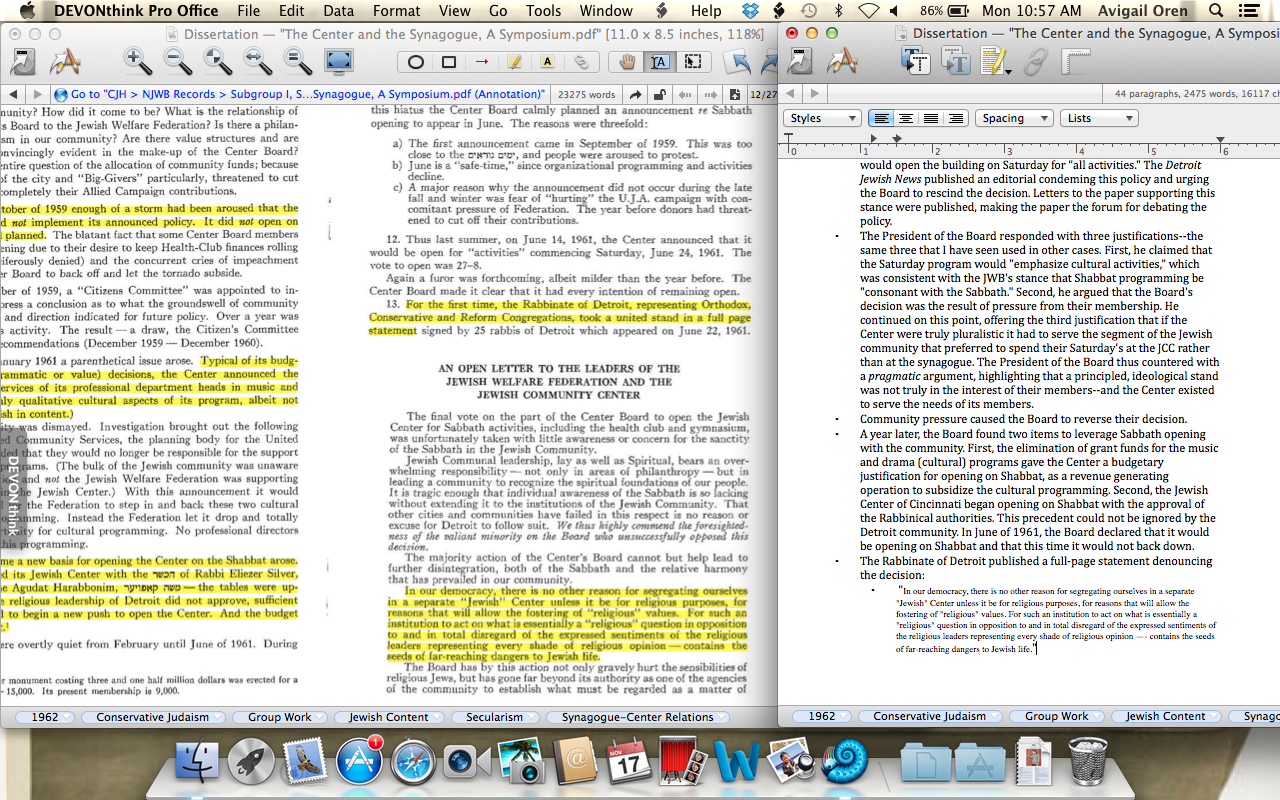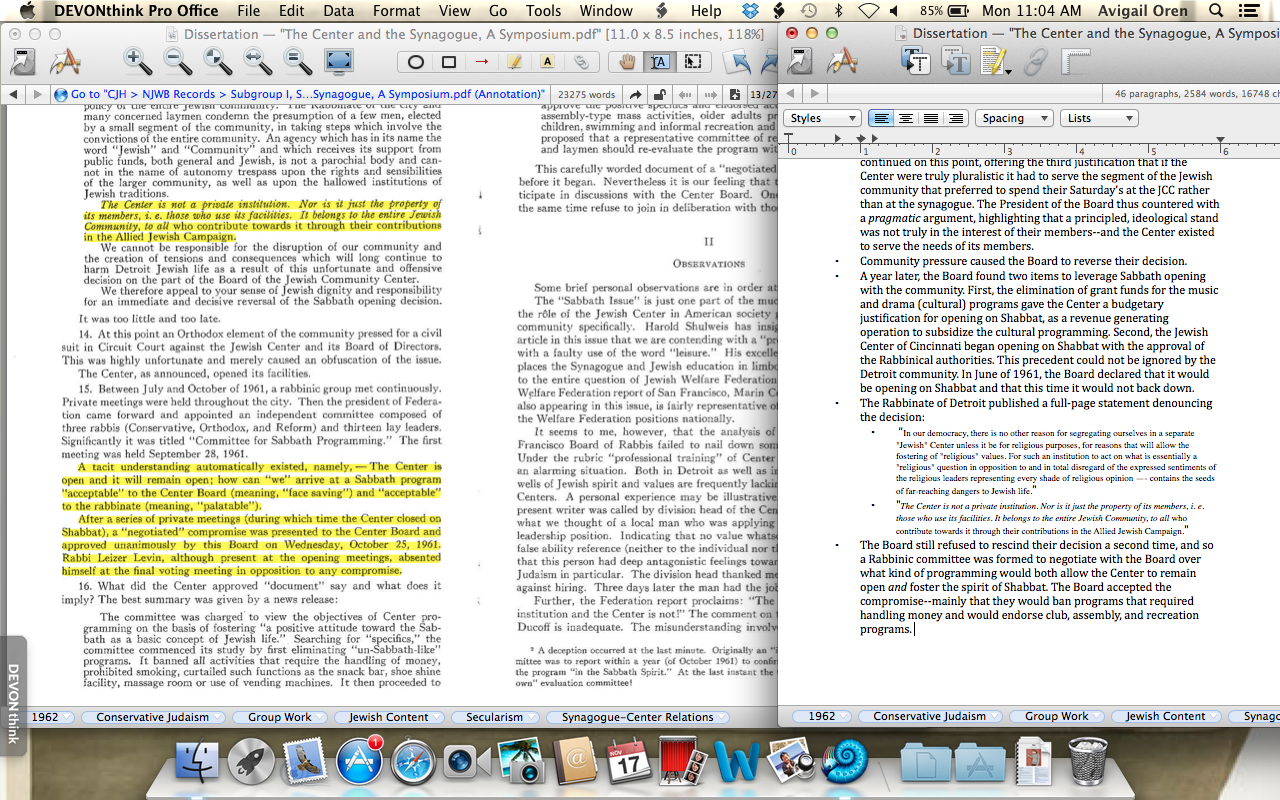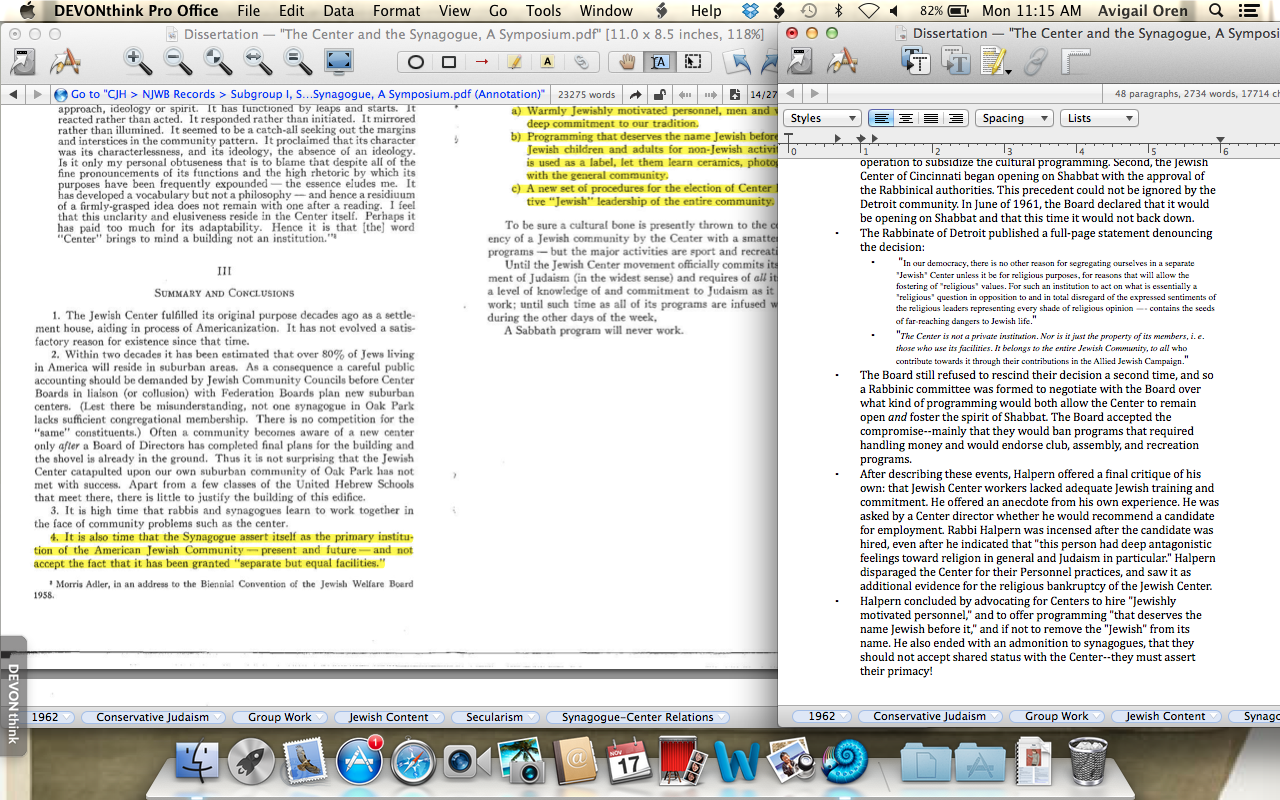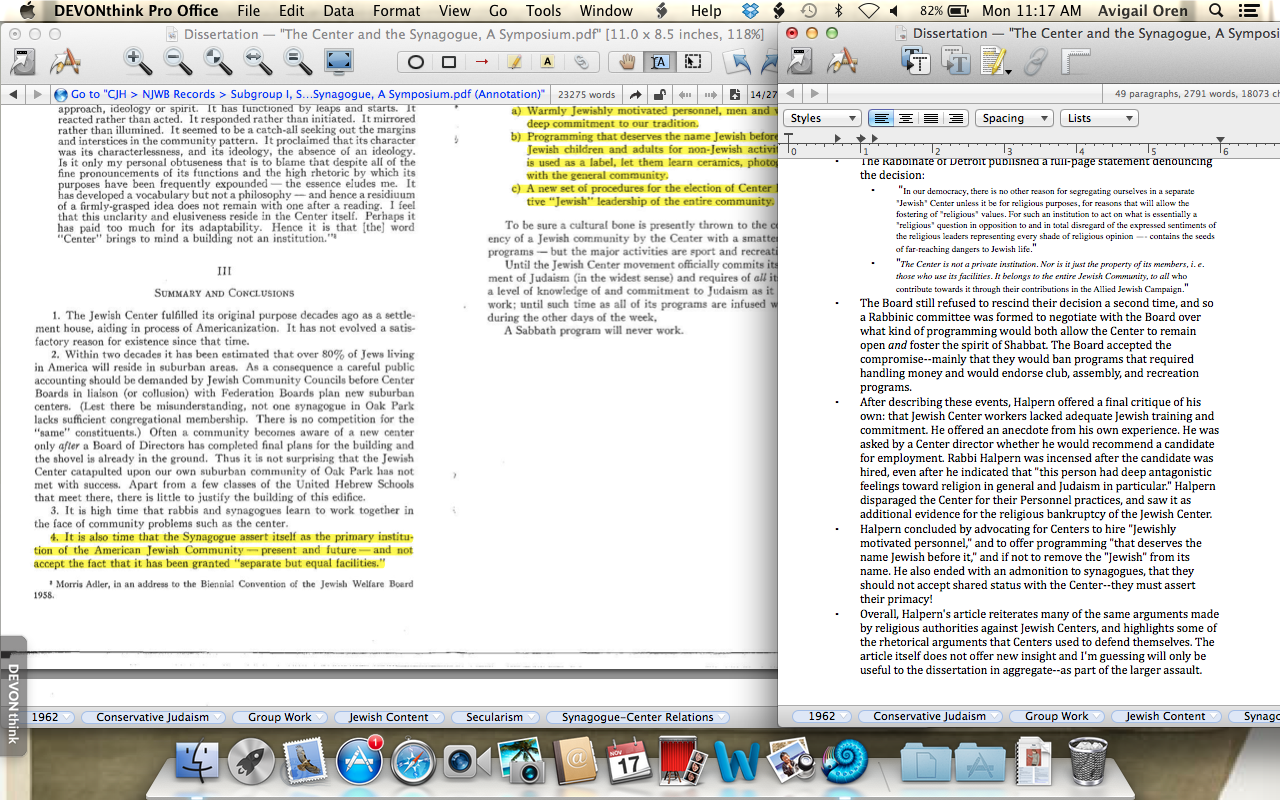As I wrote the last section of my first chapter, I discovered that a few of the sources I was relying on to tell the story of the the 1946-47 Jewish Welfare Board Survey (AKA the Janowsky Survey, after its director) were quite tricky to analyze. Because I could not find minutes or records of several important meetings, I had to piece together the proceedings from summaries that were written later--sometimes weeks or months later. How, I wondered, had hindsight colored these descriptions? Could I trust that this was what actually happened?
All historical sources have their challenges. Sometimes it's a problem of omission: the authorship of a document is unclear, or materials are undated, or the subject is ambiguous. Sometimes it's a relational issue: where does this document fit into a broader context or story? Or, why does this document contradict other sources? Then, of course, there's the ever-present challenge of reading between the lines of every document for the silences and assumptions and things left unsaid. Depending on the extent of the issue or the relevance of the document, these challenges can be addressed. Dates and authors can be guessed at using context clues and comparisons to other dated/attributed sources. Ambiguity and contradictions can be mitigated by volume; consult enough sources and a clear picture might eventually emerge. The same could be said for records you suspect were influenced by hindsight--my problem, however, was that I did not have the necessary volume of comparable sources to balance out my interpretation.
To get specific, this section was about the controversies that erupted after the Survey Director, Dr. Oscar Janowsky, advocated that Centers should be sectarian and that Jewish content should be "primary" in all Center activities. Over several pages, I outlined the various iterations of the Statement of Purpose that the JWB proposed based on Janowsky's survey. I highlighted the changes that were made as a result of opposition by, first, Jewish Center workers (represented by the National Association for Jewish Center Workers, or NAJCW) and, second, by a group of JWB lay leaders who hired Louis Wirth to conduct an "Independent Survey" of Janowsky's Survey in order to critique his emphasis on Jewish content. The changes to the Statement of Purpose were made in a series of meetings in 1947 and 1948, but despite my best efforts I could not find meeting minutes from most of them. Luckily, at the JWB's Annual Meeting in Chicago in 1948 the changes were discussed in great detail--and there was a stenographer who made a transcript of the entire proceeding! I was able to work backwards and determine how the final Statement of Purpose evolved from meeting to meeting.
Unfortunately, what I lost in this process was any sense of individual agency. I was able to see changes agreed upon by the acting committee, but not who dissented and why. I also had to assume that the rationales for the various changes given at the Annual Meeting were actually the arguments made in those earlier meetings, and not rationales that appeared more palatable in hindsight. That's an important distinction to make when you're examining a controversy!
I also consulted a reflection written by Janowsky in the 1970s. While his memory of the events plugged a lot of holes in my accounting of the events, I struggled to trust his assessments of why things happened the way they did. Not only did I fear that the passage of time might have affected Janowsky's recollections, much of the controversy manifested as personal attacks against his politics and his scholarly authority. He certainly could not be blamed for remembering the events as being much more inflammatory or polarizing than they actually were, or for pinning responsibility on certain individuals that were especially unkind towards him in 1948.
In the end, I relied on these documents to illuminate process and analyzed correspondence and other contemporary sources (reports, the meeting minutes that I did manage to find, etc.) to come to my own understanding of why certain changes were made. I think I made good choices about what information was "safe" to accept at face value and what was tinted by hindsight or agenda. I found myself really wishing, however, that I had a second reader to give their opinion. Up until this point in my educational journey, I've always read along with others--in courses and seminars, you learn as much from your colleagues' interpretations as from your own. This was the first time that I had to make an assessment all by myself, as the foremost expert on the topic. It's the scholarly version of becoming a grown up. As exciting as it is to be given responsibilities and independence, it takes a while to find your confidence and to stop calling your parents every ten minutes for their advice.

